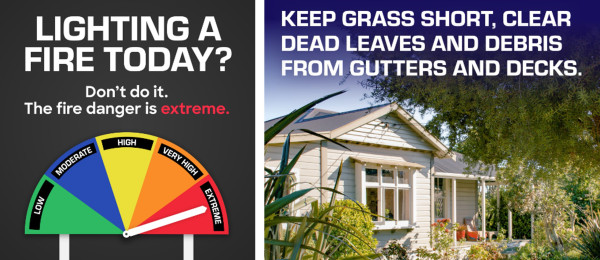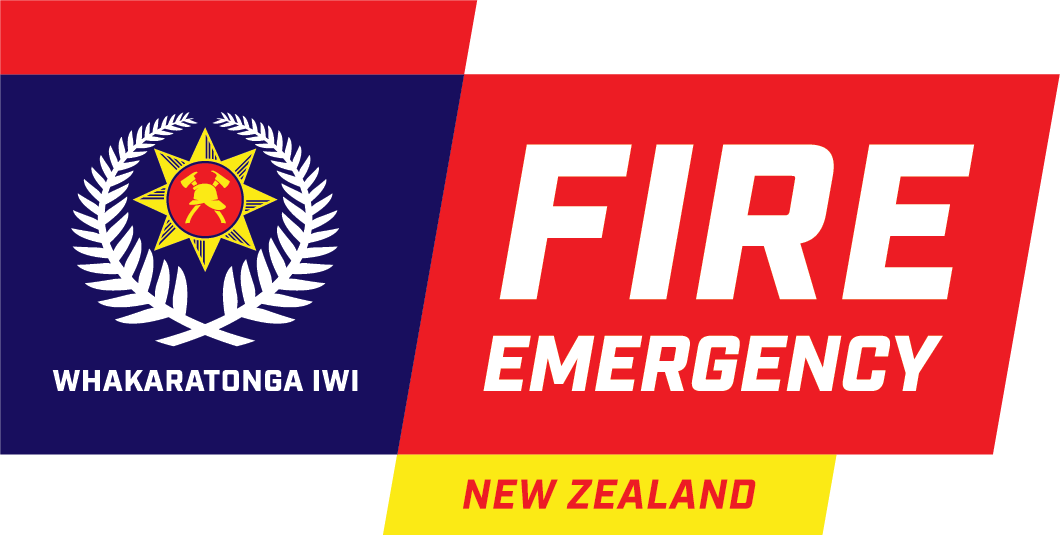Wildfire campaign launches ahead of hotter, drier El Niño
This year, forecasts point to El Niño being one of the main climate drivers for the coming wildfire season, with an increased chance for warmer, drier, and windier conditions in eastern areas of the country and more rain in the west.
In addition, the wildfire season is forecast to start earlier than we have seen in the last three seasons and potentially extend further into autumn, putting communities, property, and the environment at risk, for longer.
While warmer and drier weather doesn’t necessarily mean more wildfires, 98% of the wildfires in New Zealand are caused by people, so a lot depends on the actions of the public.
One of the challenges is the public’s experience of the last few wet seasons and the current very wet conditions in many areas of the country impacting on the public’s expectations of this summer, giving rise to potentially risky fire behaviours.
To address this, preventing wildfires and increasing our communities’ preparedness continues to be the focus of our National Wildfire Prevention and Readiness campaign(external link), which kicked off on 1 September. The campaign strategy is two-pronged, focusing on:
- Educating and empowering the NZ public, by pushing live local fire danger information via various channels and giving them the tools to mitigate wildfire risk (prevention).
- Helping people living in rural and semi-rural locations to get their homes and property ready for wildfire (readiness).

While the campaign has started, our prevention ads across social media, online video, radio and search will only be visible in areas where the local fire danger level is High, Very High, or Extreme. This helps us avoid public fatigue from our messaging when the local fire danger is Moderate or Low, ensures the campaign budget will cover the longer season through to April 2024 and allows us to focus on the higher risk areas of Aotearoa.
There is a strong media interest in the upcoming fire season and we are continuing to provide our people for interviews and publicise fire season changes. We are also continuing to work with key stakeholders Department of Conservation, Forest Owners Association, FMG, Federated Farmers and Holiday Parks New Zealand, to help get important outdoor fire safety messages to our target audiences.
What we’re doing to get prepared
We are taking a comprehensive approach to manage the risks associated with the incoming wildfire season, including:
- Briefing partner agencies (forestry companies, Department of Conservation, Federated Farmers) and Districts on the upcoming El Niño season in August, rather than October, to prompt them to start thinking about the wildfire risk earlier
- Starting our wildfire season outlooks in August rather than October to provide a good understanding of the current conditions and how these are expected to evolve over the next two to three months
- Providing a refresher on fire weather tools(external link) to our people so they are confident using them to predict risk and allocate resources accordingly
- Running an additional ‘Fire Behaviour 2’ course in October so operational personnel within Districts have the wildfire behaviour knowledge to support a range of activities in preparing, responding to and recovering from wildfire events
- A pre-season check sent to District Managers and Community Risk Managers to help them in checking their preparedness arrangements for the coming wildfire season.
In addition, we are using the experience gained by the two Incident Controllers who gained vital knowledge and skills in managing large scale wildfire events in Canada, as part of our wildfire response planning team as their recent knowledge will be invaluable.
If you would like further information about the mahi (work) happening in this space, please get in touch with Tim Mitchell, National Wildfire Manager, at tim.mitchell@fireandemergency.nz or Kelley Toy, Marketing Manager, at kelley.toy@fireandemergency.nz
